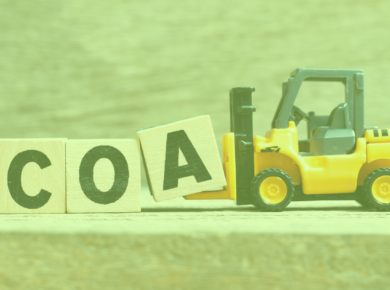What we’ll need
- Mother Plant
- Shears / Straight Razor
- Rooting Solution / Organic Equivalent
- Rooting Storage Medium (damp paper towel, rooting tray with organic potting soil, rooting pucks etc.)
- Rooting Location Space
- UV Light Source

Searching for high-quality, female cannabis or hemp clones? Click here >>
How to Transport Clones (Step-by-Step):
- Select the cannabis or hemp plant you want to clone
- Use shears or a straight razor to cut a younger branch at a 45° angle behind a node (preferably 4 – 12 inches in length)
- Clean off any leaves that are within three inches of the new clipping’s base
- Apply a rooting hormone or organic equivalent
- Allow branch to soak for 30 minutes in rooting hormone
- Move new clipping to a medium of your choice (I prefer a rooting tray with organic soil)
- Store in a secure location with a temperature between 65-75°F and humidity above 60%
- UV-Light for the new clones should be indirect light to partial shade (Caution: too much light will yellow the leaves)
- Once the clones have establish their roots (within 6-10 days), move to permanent soil
Looking for pro tips on how to transplant clones? Read all the way t the end of the article
What is a Clone?
Cloning (or propagating) plants has been done for generations. Cloning is removing a clipping from the original “mother” plant, allowing it to grow roots of its own, and transplanting it into soil. Once transplanted, the plant will fully mature into a complete clone of the “mother” plant.
This allows you to harvest the exact same quality crop from multiple sources, time and time again.
This is beneficial not only for sustainable quality control of a given crop, but also allows for the sex of the plant to be pre-determined.
The clone will be an exact genetic copy of it’s mother plant.
Whether you are growing oranges, strawberries, zucchini, or cannabis, cloning is a sustainable and effective way to produce high quality products consistently.
Searching for high-quality, female cannabis or hemp clones? Click here >>
How it Works

Once a plant has reached a stable point in its growth cycle, (6-8 weeks from seed) and is in the “pre-flowering” phase (waiting this long allows you to identify sex, if unknown), it is ready to be cloned or propagated.
A younger branch is then removed with shears or a straight-edge at a 45 degree angle.
A rooting hormone or organic equivalent is applied to the freshly cut open base of the branch
Then, the branch is allowed to root in a medium. Common mediums include a damp paper towel, a cup of water, or planted directly into organic potting soil often called “rooting pucks.”
Once the roots are 1-2 inches in length, the plant should be moved to a permanent location. This new location will allow it to grow into a fully matured clone of the “mother” plant.
Why Clone You Hemp and Cannabis Plants?
It is simple, effective, sustainable, and more efficient.
Sprouting plants from seeds is great for industrial hemp, breeding dynamic hybrids, or growing your first crop.
However, when harvesting for buds, clones can be beneficial for a number of reasons.
Searching for high-quality, female cannabis or hemp clones? Click here >>
Predetermined Plant Sex
Clones allow for a more streamlined approach to growing. Saving time and money.
Taking clippings from a healthy female plant and rooting it in good soil will yield an exact genetic copy of the female “mother” plant.
Knowing the sex of your plants “guaranteed” ahead of time is a priceless resource.
More Effective Use of Time and Resources
Waiting for a plant to fully mature to the point where the sex is determined takes time, water, resources, space, and inspection.
Since each seed holds its own unique plant there is no way to determine if the plant will be male or female before the pre-flowering stage (6-8 weeks). Some companies will sell “feminized” seeds in order to convince you it is the better path.
Feminized cannabis and hemp seeds are genetically altered so that they produce a majority of female plants. Even when using feminized seeds, feminine plants only grow in around 95% of the cases.
Most of the time, the results of your plants being male or female is 50/50. Why would you spend time and money growing male plants if you have no use for them?
If you are primarily to harvesting buds, then the goal is for the majority of your crop to be female. You may want to have a few males for pollination and reproduction purposes, depending on the size of your crop and your individual end goals.
No Forced Seed Production or Harmful Chemicals
”Feminize seeds” can be obtained by many seed sellers. These are seeds that are mostly female, but knowing how these seeds are produced is important information, before you buy.
Feminized seeds are produced two ways:
Chemical Induction
Chemical Induction is when the plant is sprayed with a solution of colloidal silver and gibberellic acid. Colloidal silver can be purchased on its own or produced. You can produce colloidal silver by pulling minerals from a silver source, submerged in a distilled water solution by means of an electric current.
Cannabis that has ANY residue of colloidal silver can not be consumed.
Though there are claims that seeds produced in this method are “safe,” medical data reported,
colloidal silvercan cause possibly irreversible serious health problems, including kidney damage and neurological problems such as seizures.
Mayo Clinic
Rhodelization
Rhodelization is a highly un-advised method. In last ditch efforts, the feminine plant uses all it’s remaining energy to self pollinate in an attempt to continue the species.
This is done by placing massive amounts of stress on the plant and runs a higher risk of killing the plant than reaping any feminine seeds what so ever.
Again not recommended.
Chemical induction and rhodelization are clear examples of the stressors that go into forced seed production. They illustrate why cloning can be such a valuable tool in maintaining a healthy, happy, reliable crop each harvest.
Searching for high-quality, female cannabis or hemp clones? Click here >>
Known Genetics
With a successful, high quality harvest, you can continue to produce that product in higher volume by cloning/propagation.
You have spent time and energy growing a crop and seeing the differences between each unique plant. As a grower you can now take your best plants, clone them, and have a known genetic crop of high-quality plants. That crop will be reliable and consistent in its production as long as soil health continues to be maintained
When should you transplant clones?
Once the plant has grown 6-8 weeks (from a seed) it will enter the preflower phase, for a two week window. I recommend harvesting at the very beginning of this phase, for any propagation you are wanting to do.
This allows you to observe your clones for one full week and confirm all the snipping are rooting.
If they are not you can use the second week to try one more time before the flowering phase begins. Once the flowering phase has begun, the window for cloning has closed. Anything snipped after that will only impair the production of the “mother” plant.
Check Out Our Pro Tips for Transplanting Your Clones
[PRO TIP] Some swear by spraying with foliar sprays or organic “plant food.” This is not necessary. Especially if rooting in organic potting soil. It does add some peace of mind concerning nutrient deficiencies during the early stages of propagation, but is not necessary.
[PRO TIP] When removing the clipping, cut as close to the main stalk of the mother plant as possible. Then cut behind a node on the clipping at a 45° angle. This allows for better health of the mother plant and a more precise angle on the clipping. This adds to more efficient mineral absorption.
Searching for high-quality, female cannabis or hemp clones? Click here >>




